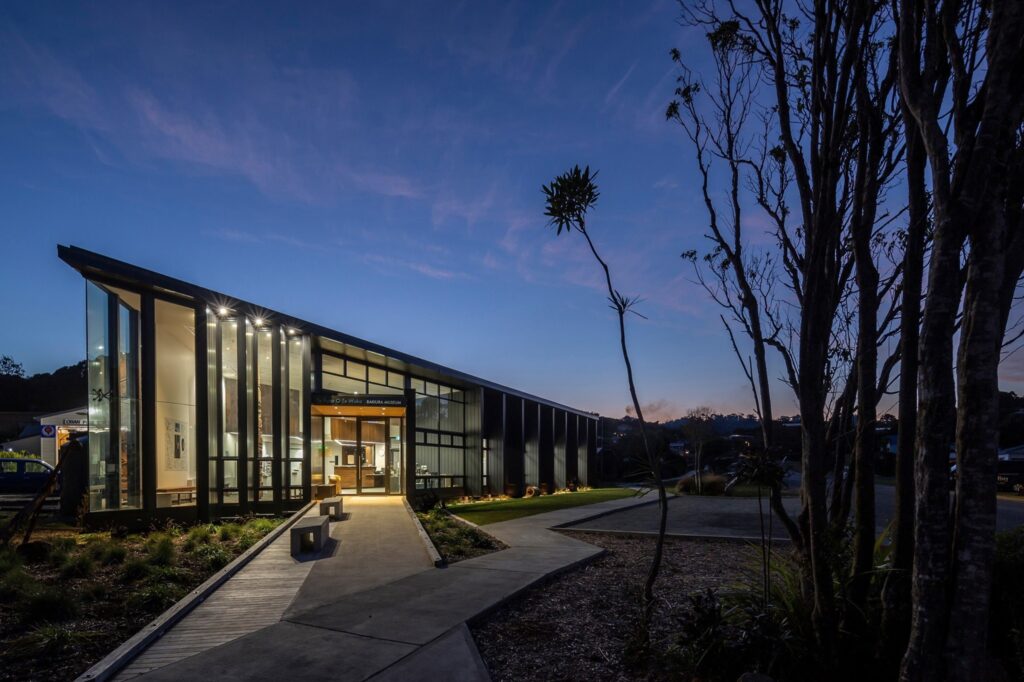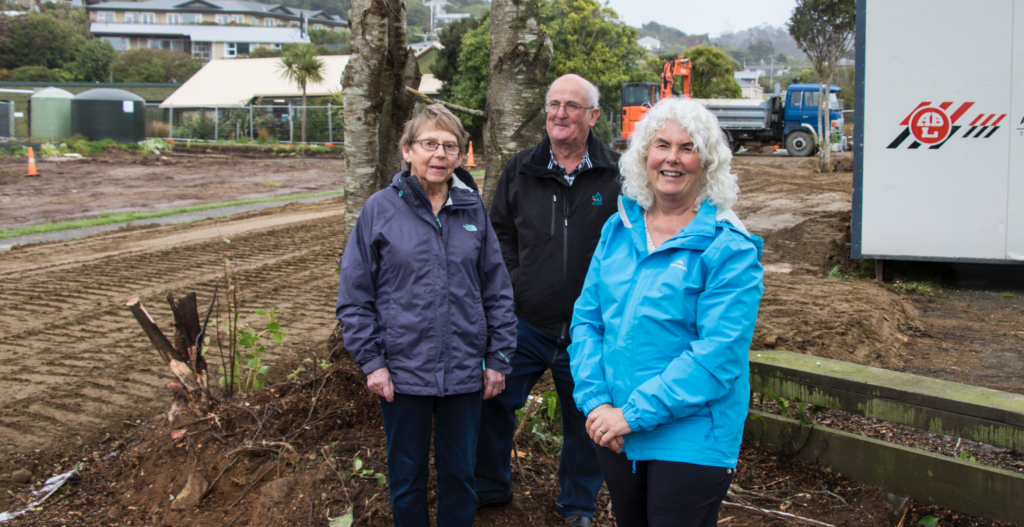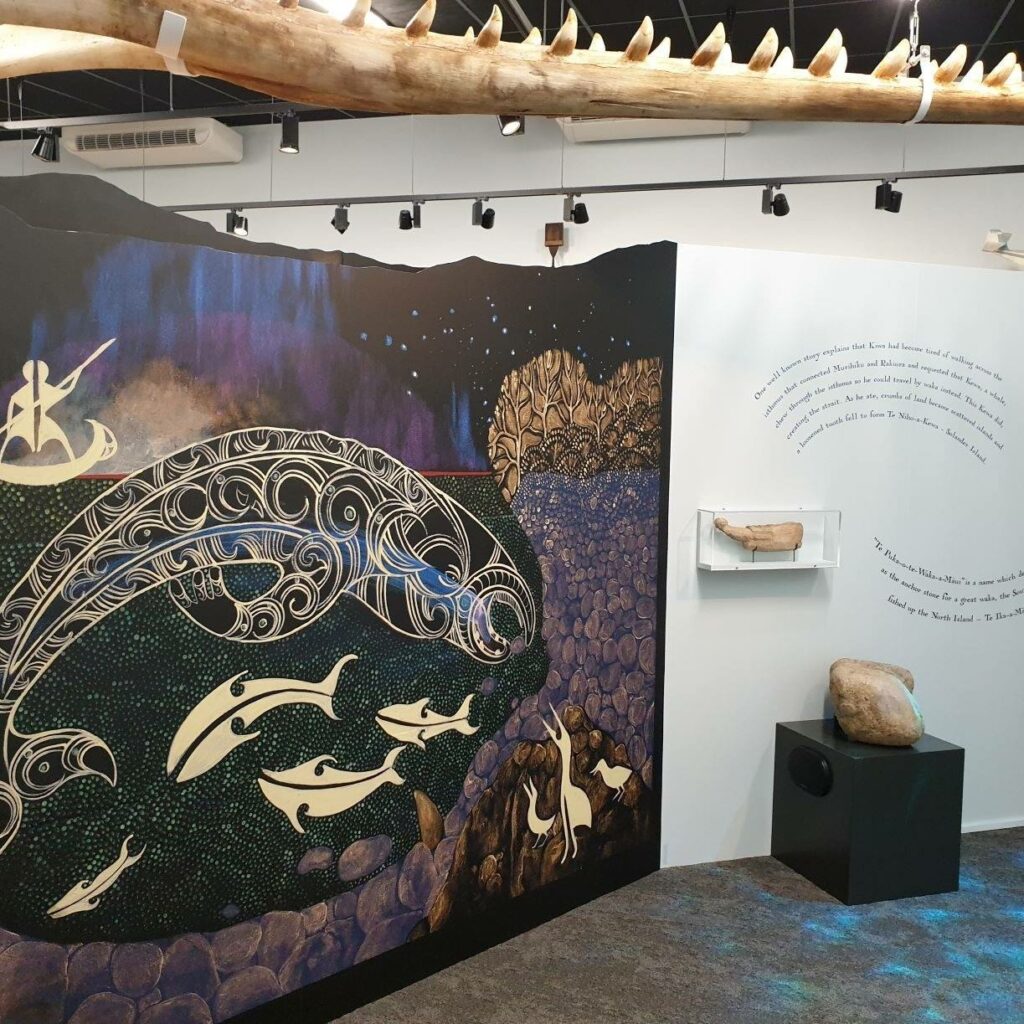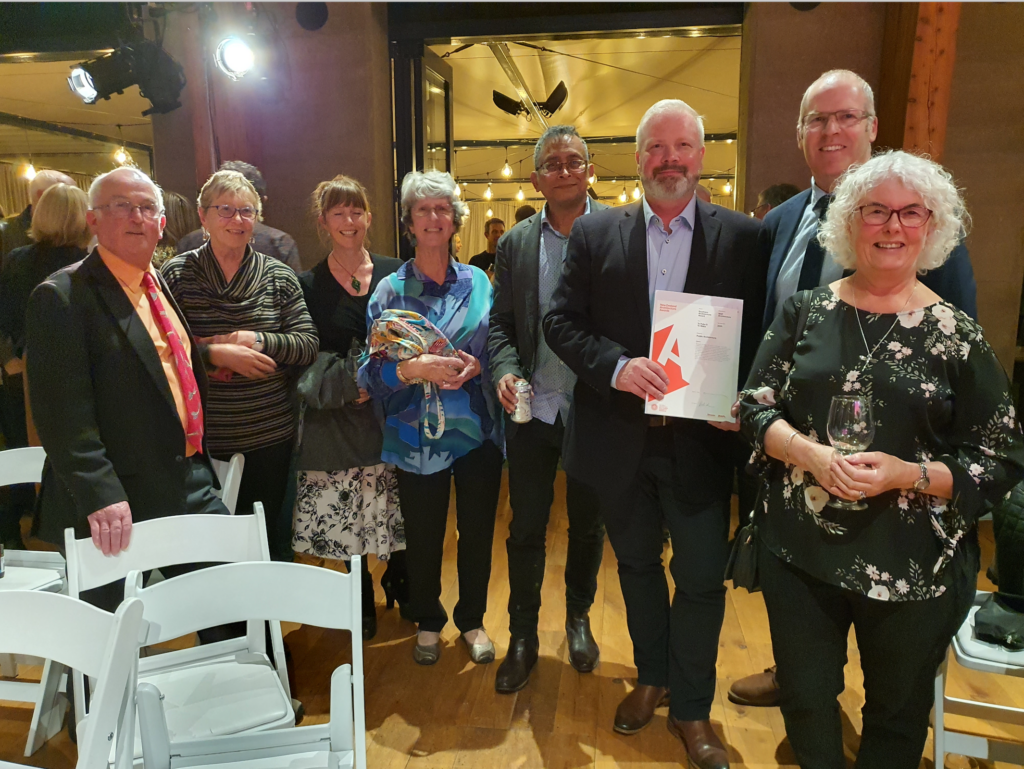




From small places come big things – The story of the Rakiura Museum
Rakiura, otherwise known as Stewart Island, is a beautiful, remote and virtually untouched part of Aotearoa. Surrounded by native bush, windswept beaches, rugged coastlines and rare wildlife, the place holds a strong attraction to both locals and visitors alike.
Rakiura (Stewart Island), is a beautiful, remote and virtually untouched part of Aotearoa. Surrounded by native bush, windswept beaches, rugged coastlines and rare wildlife, the place holds a strong attraction for both locals and visitors alike.
With only 400 permanent residents, the people of Rakiura often have to look inwards to get things done – and they do. Rakiura has a strong history of its community pulling together to make things happen. The development and building of the new Rakiura heritage centre which opened in December 2020 was no exception according to Rakiura Museum – Te Puka o te Waka building committee chairwoman Margaret Hopkins.

The Rakiura Museum had existed on the island since the 1960s. Home to a large collection of important items, it had undergone an extension in the 90s before it was decided that a brand-new building would be needed to house their expanding collection. A Trust was set up to manage this new build, bringing in people who were already trustees of the existing museum, council members, community board members and the Stewart Island Promotions Association.
The original Rakiura Museum.
Funding was their first challenge. Some of the members of the Trust had become adept at writing funding applications during the build of Rakiura Community Centre, a hugely successful community-led project in the 90s, and so were able to navigate the application process for the heritage centre. However, realising that the funds required would be much larger than that of the Community Centre, this time a project funding manager was engaged.
“You can only do so much and at times one or two of us were doing everything – It was exhausting in the early stages”
Trustees also approached anyone with a connection or link to Rakiura and discovered just how important this new museum was to people who had ancestry on the island. They received a lot of support and were surprised with the donations from people who only had tenuous connections to the island. When a final grant from the Ministry for Culture and Heritage was provided for $1.1 million, the Trust could finally put a spade into the ground and begin.
Building began in October 2019. An architecture firm and building company from the mainland were hired to create the structure; a triangular-shaped building that was reminiscent of a ship which was in keeping with the collection and the history of the island.
“It was very hands-on! The Trust was even baking for the builders, making sure they were kept happy through all the terrible South Island weather!”

A year on from when they first broke ground, the Rakiura heritage centre was finished on time and on budget.
The new Rakiura Museum
Drawing on Experience
Having worked on the Community Centre, Margaret was able to bring learnings from that project into the Rakiura heritage centre. At the top of this list was the importance of having a vision and knowing that with hard work, commitment and persistence – anything is possible.
As there often is with many large community projects, the Heritage Trust encountered their share of naysayers. A few permanent residents did not see the need for what they only saw as a tourist attraction and felt that the build was a waste of time and money. Rather than stop the project however, these negative comments made the Trust more determined to make it happen.

“To us, it felt justified, we know how important our history is for not only Southern New Zealand but for the whole country”
Trustees Anita Geeson, Bruce Ford & Margaret Hopkins at new museum site.
Having a good team with multiple skills and connections was also crucial. The important process of tendering for architects and building companies was done with care, ensuring that the professionals they engaged with understood how important the building would be when it came to representing the community and the history of the island.
Telling the Right Stories
Setting up the exhibition itself was a big step in getting the centre open and one that held many lessons for the Trust. This was one area where Margaret saw an increase in community members who were enthusiastic about getting involved. This provided an opportunity for many locals to see, touch and learn about the items that made up the fabric of their history.
“It gave locals a sense of ownership, especially when they could see their own stories being told.’
It was essential to the Trust that the right voices were heard when it came to telling the history of Māori settlement and habitation on Rakiura. For this, a local iwi committee was set up and engaged with to ensure that the items and stories they had on display correctly told this part of the Island’s history.

Margaret believes the exhibition is now more balanced because they have the correct stories, are able to focus on what brought people to Rakiura in the first place, and can celebrate the early communities who made Rakiura home.
Exhibition at the new Rakiura Museum.
The Importance of Mana
Despite the Island having a long history of Māori settlement, the culture and stories of local iwi were generally not well known or embraced. However, when the new Rakiura Museum finally opened with a pōwhiri, Gwen Neave who serves on the Toi Rakiura Arts Trust committee which commissioned and supported the Oral History project featured in the Museum, noted that it was a beautiful bridging moment for the community.
The pōwhiri was performed by a group, of which Gwen was a part of, that also included the local school and its students. While it was challenging to bring together and involved weeks of practice, Gwen saw the pōwhiri it as an opportunity to introduce this key cultural element at the perfect time.
‘It brought mana and gravitas to the occasion. It was moving for many there and well-received by those who witnessed it.’
A resident of Rakiura for 55 years, Gwen says the pōwhiri has had far-reaching effects on the island. Te Reo is now being taught to a class where they learn tikanga as well as the history of the island and about the mana whenua who live there. It is also being embraced in places like the local Four Square and in the school where Te Reo and English are used interchangeably.
There is a new dynamic to the community now, one that is more actively embracing biculturalism, the language and the deeper stories of this place. Gwen also notes that she’s loving seeing the way New Zealanders more broadly are coming of age with Te Reo and is so proud of the way that this small community at the bottom of the south is embracing this too.
Community Development is not always a linear path
As it is with any large-scale community project, challenges are always present. Whether it is the practical logistics of building in a remote location or negative comments from some quarters, there will undoubtedly be obstacles to overcome. Creating things for and in the community can at times be messy – it’s never a linear path.

Having not yet been open for a year, the heritage centre has already seen 14,000 visitors through the door. The centre has seen 25 school groups visit as well as strong support from both local and national visitors. To the community it is not only a source of pride and achievement but also a great drawcard to the Island, helping to bolster tourist numbers and support the economy of Rakiura.
Bruce Ford, Raylene Waddell, Jo Learmonth, Elaine Hamilton, Raja Hidzir, Julian O’Sullivan, Ian Sutherland, Margaret Hopkins
Margaret is also excited by the next generation of strong community-led leadership that’s emerging on Rakiura via Future Rakiura – a group formed in 2019 to encourage and build collaborative leadership skills amongst young people. As a mentor for this group herself, Margaret has seen them pull together and lead Waitangi Day celebrations, community get-togethers, and fundraisers for small community projects. Gwen also is a mentor for Future Rakira. Connections help to bind the community together, allowing them to create a unified focus when it comes to getting things done for the people who live there.
“When you come out the other end of a project like this, you realise that no matter where you live, or what resources you have at hand, if you have the vision and the drive to get it done – anything is possible”
